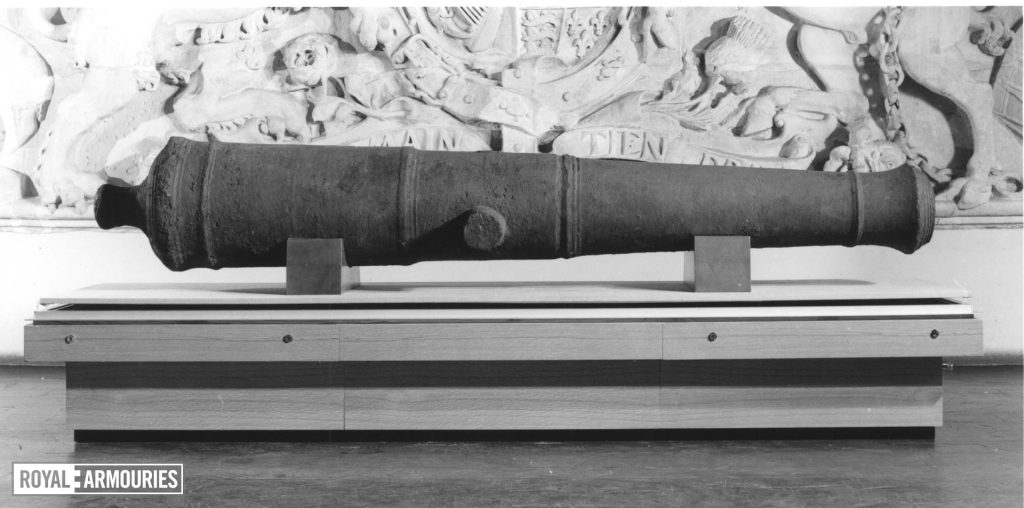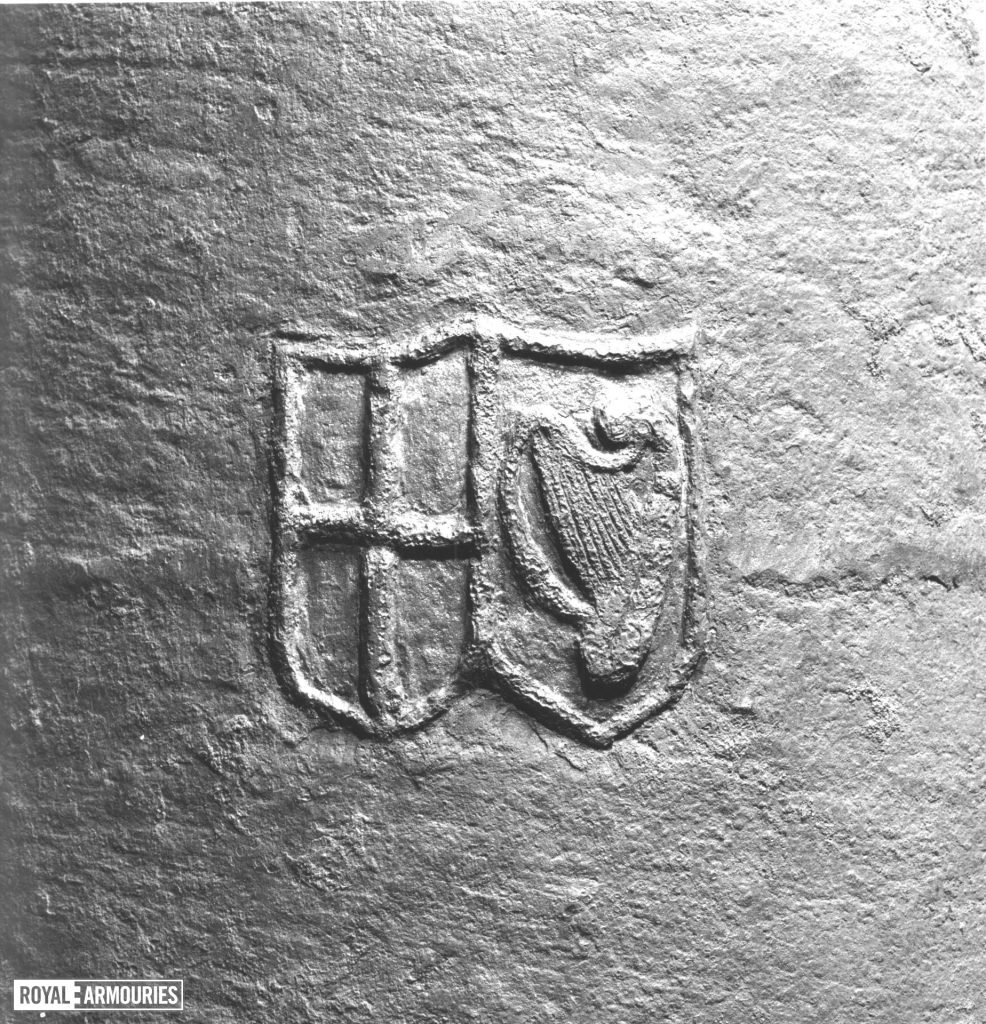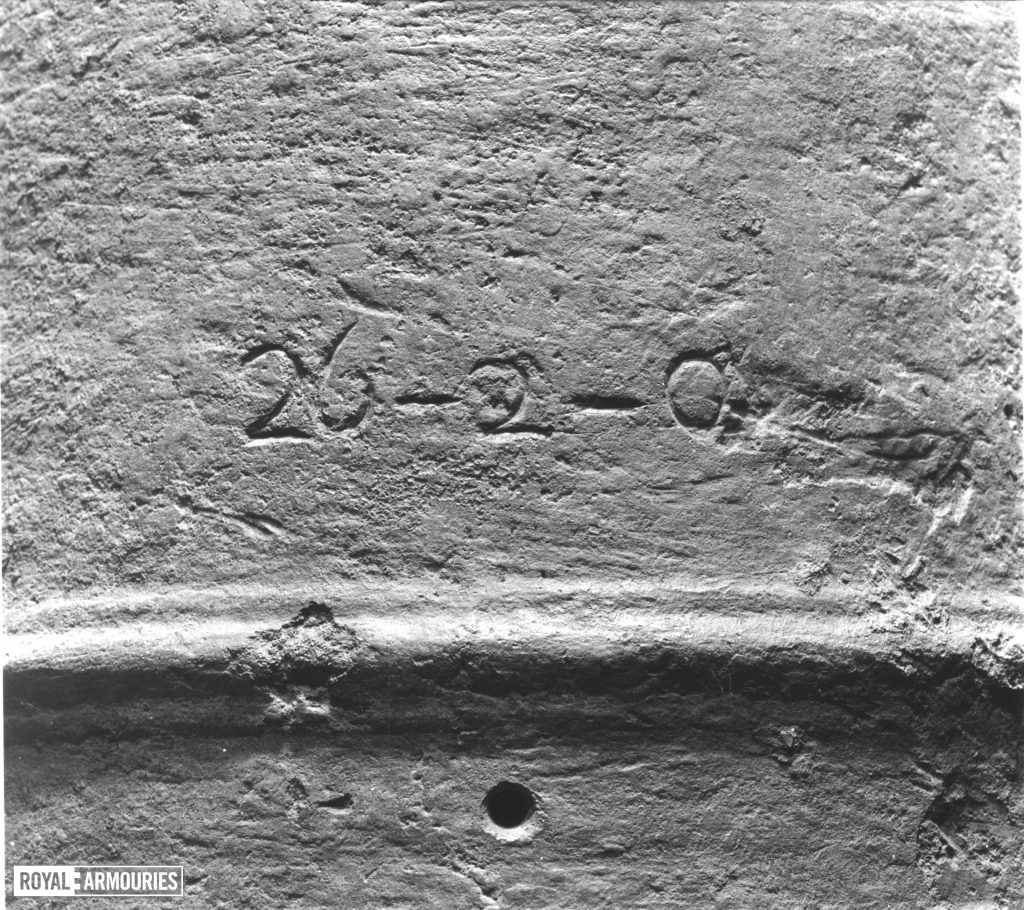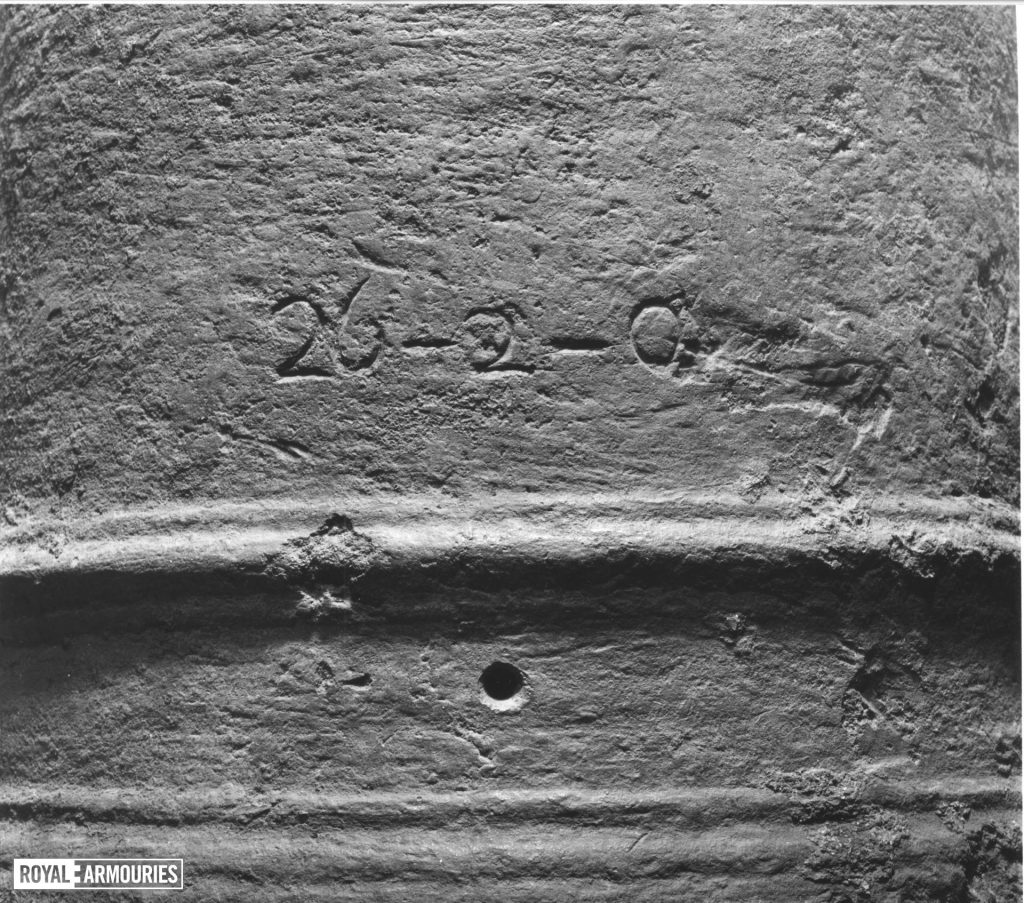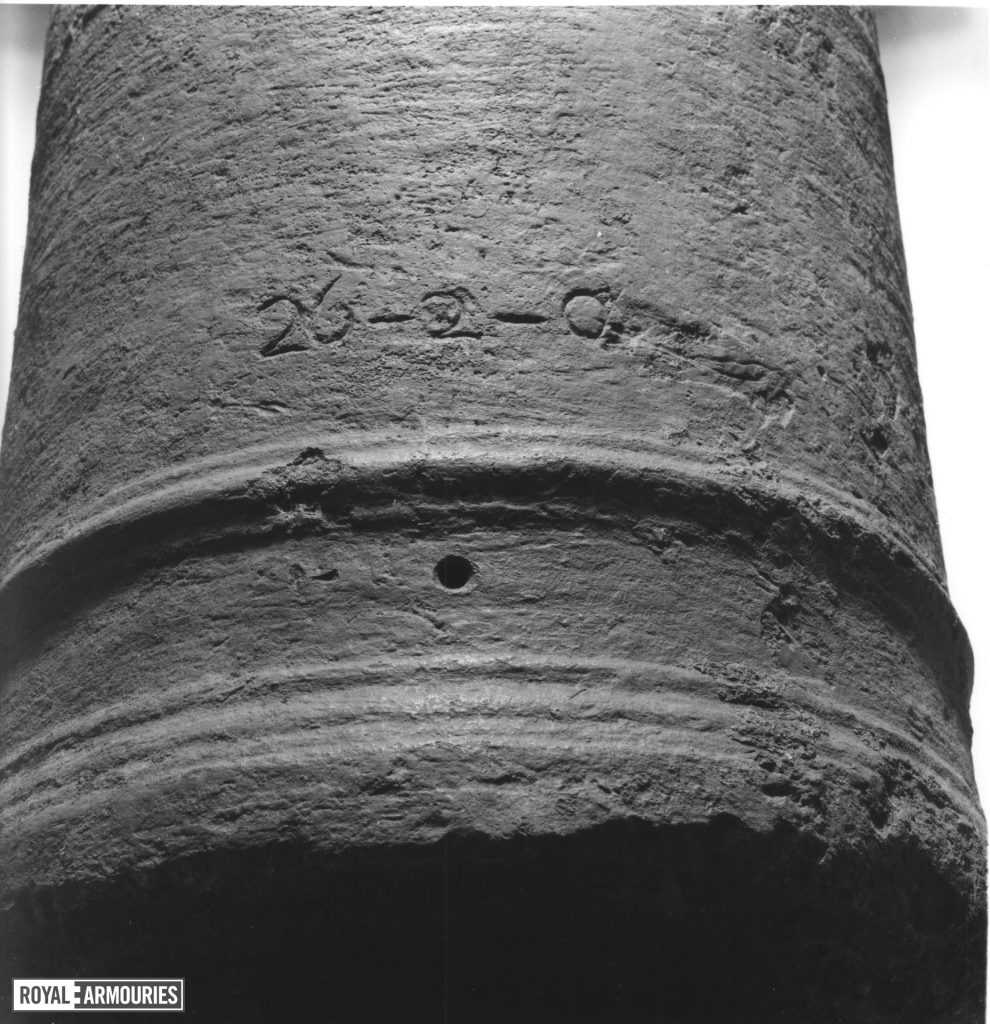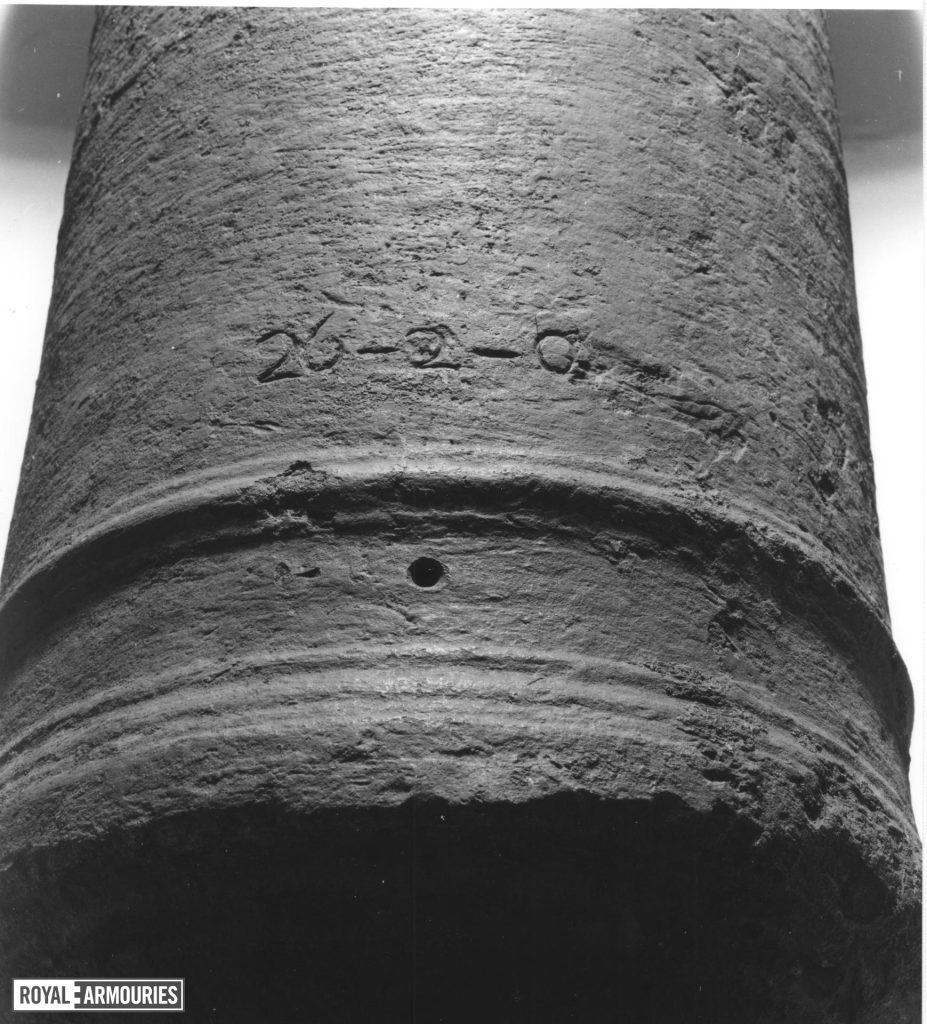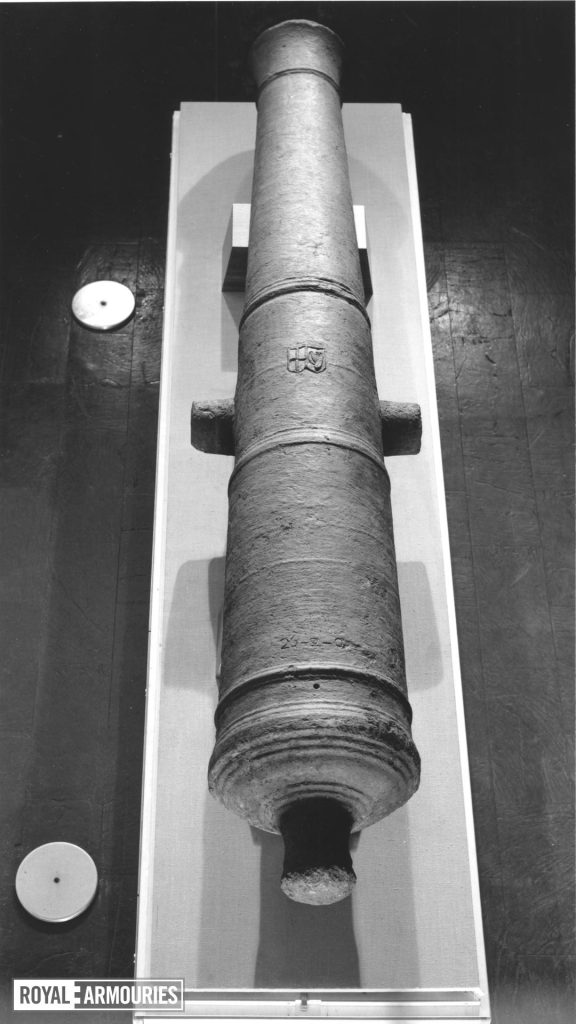1652 Culverin Drake Cast-iron Smooth Bore Fort Nelson
Horsmonden gun aka The Commonwealth Gun
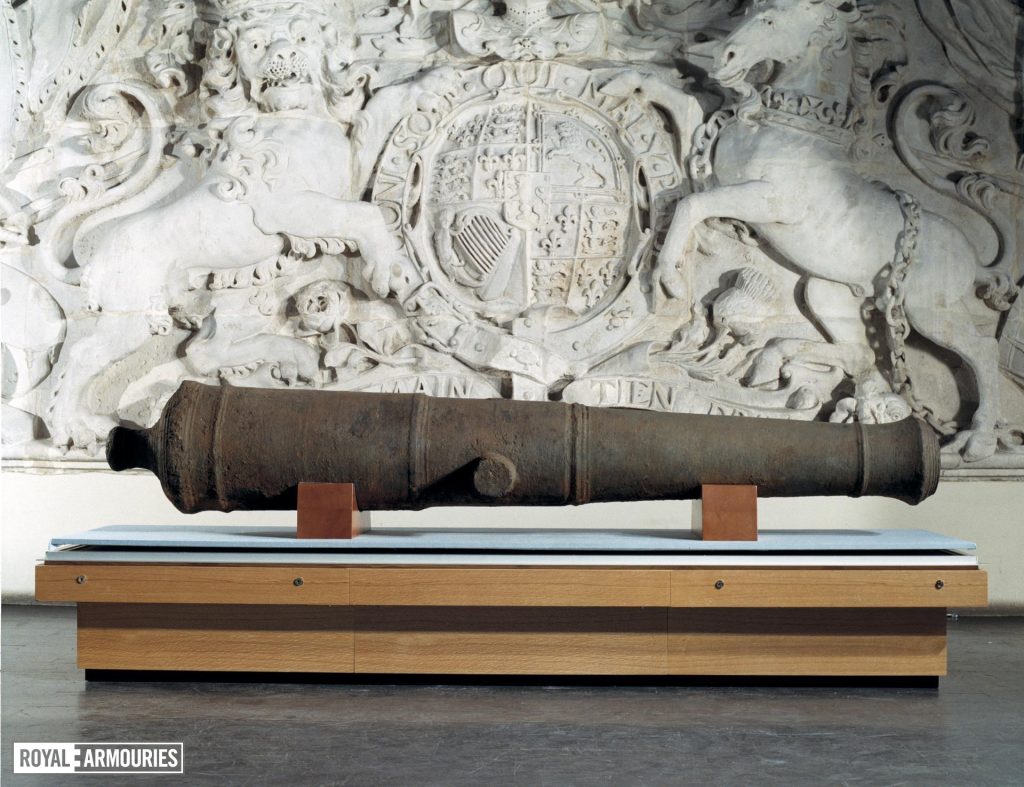
Cast by Thomas Ffoley and George Browne between 08/09/1652 and 25/10/1652. It armed the ‘Oak’, a ship of the English fleet. This was sunk on 31/07/1653 during the Battle of Scheveningen in the First Anglo-Dutch War (1652-1653). It was netted and brought up by Dutch fishermen in 1984 about 15 nautical miles west of Europoort.
Royal Armouries description
This barrel was cast with the following features. The button is in the form of a waisted cylinder with a slightly rounded end and two mouldings on its body. It springs from a quadruple moulding and then a double moulding just before the base ring. Immediately after the base ring there is a fillet and ogee marking the start of a very short vent field of 52 mm. At the end of the vent field is a vent field astragal and fillets to mark the start of a plain first reinforce. At the end is a first reinforce and ogee marking the start of the second reinforce upon which may be found the arms of the Commonwealth in low relief and the trunnions. At the end of the second reinforce and start of the chase is an annular groove, a second reinforce astragal and fillets and an ogee. The chase is plain before the muzzle astragal and fillets, muzzle flair and five muzzle mouldings. The breech chamber is concave.
Royal Armouries Notes
This gun, an 18-pounder, was found by the vendor, a fisherman, in 1983, in the North Sea in the area believed to be the site of the Battle of Terheyden or Scheviningen, fought 31st July/1st August 1653 during the First Anglo-Dutch War (1652-1653). Only one sizeable English ship was lost, the ‘ Oak’, 32 guns, and it is therefore possible that this is one of her cannon. However, amongst the ships lost by the Dutch were two ‘The Garland’ and the ‘Bonaventura’ which had been captured from the English in the previous year (see Atkinson, letters and papers relating to the first Dutch Wars, vol V, p.372); and it is possible that these were still armed with artillery captured with them. The order for the fitting out of the ‘Oak’ was issued on 24th December 1652 (WO55/462), and it is therefore probable that it would have been equipped with new guns cast with the arms of the Commonwealth. This gun appears to have been part of a consignment of 150 guns ordered for sea service from the founders Ffoley and Browne on 08/09/1652 and paid for on 25/10/1652. This gun was described as a ‘culverin drake of 8 foote’. It was delivered to the Tower of London sometime in late September or early October 1652 and thence to Tilbury to arm the ‘Oak’. A Culverin Drake was, at the time of its casting, had a standard bore of 5.5 inches. It was also used to describe guns that were shorter and sometimes lighter than ordinary guns of the same bore. One of the characteristics of a Drake was their taper-bores which this gun has. An inventory file exists for this gun.
Keyfacts
Type: Culverin Drake
Gunfounder: Thomas Ffoley & George Browne
Cast: 1652
Material: Cast-iron
Calibre: 140mm
Weight: 26-2-0 [26 cwt – 2 quarters – 0 lb]
Shot: 18 pounds
Distinctive markings: Second reinforce cast in relief: The Arms of the Commonwealth [Cross of St. George and Irish Harp]. First reinforce incised: 26-2-0
Ship: Oak
Discovered: 1984 off Europoort, Holland
Current Location: Fort Nelson
Object number: XIX.325
Photos: © Royal Armouries
| Barrel | Bore | 140 mm |
| Barrel | Length | 2432 mm |
| Barrel | Length | 2690 mm |
| Barrel | Weight | 1346.2 kg |
Fort Nelson map
